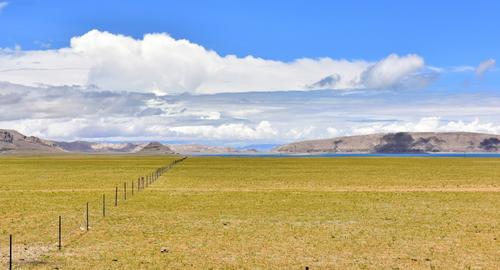Effects of grazing and functional trait diversity on productivity of alpine grasslands along environmental gradients across the Northern Tibetan Plateau
Researchers
Jianshuang Wu
Abstract
The Tibetan Alpine grasslands are sensitive and vulnerable to climate change and grazing disturbance. However, the underlying mechanisms of alpine grassland degradation remains unclear. Plant functional trait diversity is increasingly used as a statistical mechanistic approach to understand the relationship of biodiversity and ecosystem functioning, and to disentangle relative contributions of climatic, edaphic and human factors in shaping ecosystem functioning as well as community assembly. In this study, I will conduct two field surveys at 18 pairs of grazing vs. enclosure sites across alpine meadow, steppe, desert-steppe (six pairs of sites per grassland type) across the Northern Tibetan Plateau. Aboveground biomass and relative abundance will be measured using a standard field producer. Species will be indentified and categorized into ten alpine growth forms: stem rosettes, basal rosettes, tussocks, acaulescent rosettes, cushions and mats, upright shrubs, prostrate shrubs, erect herbs, prostrate herbs, and trailing herbs. We will measure eight functional traits including specific leaf area, leaf nitrogen concentration, foliar carbon and nitrogen isotopic compositions (delta13C and delta15N), specific fine root (diameter < 2 mm) length, root nitrogen concentration, and root carbon and nitrogen isotopic compositions (delta 13C and delta15N). Both trait overlap and trait mean weighted by specis relative abundance will be calculated. Explanatory variables will include growing season precipitation, accumulated temperatures, and habitat aridity index, soil carbon, nitrogen and water contents. Paired samples t-test, analysis of variance, principal response curves, and generalized additive models (GAM) will be applied to examine the effects of grazing on biodiversity along environmental gradients.
The project aims (1) to understand the role of grazing on community assembly at zonal alpine grasslands (meadow, steppe and desert-steppe) in the perspectives of growth form composition and functional trait diversity, and (2) to determine effects of changes in alpine growth form composition or plant functional trait diversity on the spatial productivity variation of alpine grasslands.
Funding
Funded by the Alexander von Humboldt Foundation


